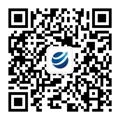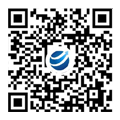The development cycle of Sunline has been increased from the previous four-week iterations to the frequency of iterations every two weeks and 95% of the requirements for each iteration can be developed within one week. In terms of continuous integration improvement, the platform supports more than 100 application integrations as well as exceeding 500 application integrations and tests daily, reducing the integration time to the minute. In continuous deployment, it can meet the requirements of application deployment and online at any time period. With these innovations, Sunline aims to help financial institutions improve their research and development (R&D) efficiency.
In this era where software defines everything, software delivery efficiency and quality have become the core competitiveness of current enterprises and are the foundations for enterprises to meet the diverse needs of users.
In 2017, the "DevOps Status Research Report" by Puppet and DORA (DevOps Research Assessment) that combined more than 27,000 DevOps survey feedback proved that DevOps practice promotes higher IT efficiency and improves productivity, profit and market share. However, the successful implementation of DevOps is still hard to achieve.
MOne reduces the distance between enterprises and successful DevOps implementations
Sunline realizes the support of tools in the DevOps revolution through a self-developed one-stop R&D collaborative management platform, Manager One (hereinafter referred to as the MOne Platform). MOne platform is developed to identify the problems and shortcomings of R&D efficiency, adopting advanced R&D architecture and has been polished through many business scenarios to cover project and application integrations. The entire process of continuous deployment and measurement feedback can provide enterprises with a complete solution from demand, code and deployment that comprehensively improve enterprise research and development efficiency as well as strengthen internal collaborative management.
MOne covers the entire life cycle of product R&D including goal planning, demand management, iteration tracking, code management, construction management, test management, deployment and release, achieving a one-stop delivery of R&D management.
MOne integrates mainstream DevOps tool chain, provides visual delivery pipeline management and deeply incorporates the entire R&D tool chain.
MOne sub-products can be deployed independently and users can independently choose product application development scenarios.
MOne Report provides visual R&D performance index measurement and analysis, identifies low performance and provides data support for continuous improvement.
Application Method 1: MOne agile project management based on OKR
What is MOne OKR?
MOne OKR is an enterprise collaboration platform that implements OKR management methods. OKR (Objectives and Key Results) refers to the method of objectives and key results. It is a set of management tools and methods for clarifying, as well as tracking objectives and their completion. MOne OKR combines tools and concepts to provide platform tool support for the implementation of OKR. MOne OKR combines the OKR management method, based on the "agile" concept to provide a visual model that realize the openness and transparency of the entire OKR process of the team. Through OKR decomposition and formulation, implementation feedback and review as well as scoring functions, management of the entire life cycle of OKR is realized. MOne OKR also can integrate Enterprise WeChat group robot notifications to enable real-time follow-up and feedback progress, ensuring that efficiency is achieved.
MOne agile project management for ‘planning first’ and iterative implementation
In terms of design integration with Jira, MOne OKR provides project and lane structure decomposition. The goal, key results and the hierarchical structure of Jira's Epic, user story, and subtask will gradually decompose OKR formulation. MOne OKR provides a ‘target tree’ display design which realizes the link association from ‘department target’ to ‘R&D task’, enabling visualized target and tracking management process through the combination of target and R&D task.
In terms of functions, MOne OKR plans quarterly short-term goals, integrates Jira to automatically track and measure the progress of goal completion, combines with Scrum Agile development methods and continuously delivers through iterative sprints, achieving a closed loop from user needs in the software development process.
MOne Agile R&D Management combines OKR and agile projects to achieve quarterly goal planning and iterative implementation mechanism with many advantages:
Transparent collaboration: Provides an open and transparent collaboration mechanism for OKR based on the three MOne OKR modes.
Quantitative tracking: OKR is a continuous quantitative tracking method for goals, which requires regular tracking and review to ensure the achievement of goals. MOne OKR provides traceability and integrates Corporate WeChat robot notifications to remind and notify the progress of goals in real time, while reviewing and measuring the function provides support for the resumption.
‘Planning first ‘and iterative realization: MOne integrates Jira to realize the unified association of ‘Goals → Key Results → EPIC → Story → Subtasks’, thereby achieving automatic measurement of the progress of the goal and unity from quarterly planning to weekly iteration.
Continuous improvement: In the process of project management, retrospective meetings should be held regularly, which also follow the PDCA principle (plan-execute-check-process). MOne OKR provides online meeting minutes.
Application Method 2: Continuous integration and deployment of DevOps based on MOne to improve overall process efficiency
1. What is continuous integration, continuous delivery and continuous deployment?
Continuous integration emphasizes that the efficiency after a developer submits a new code to immediately build and test it. According to the test results, we can determine whether the new code and the original code can be correctly integrated.
Continuous delivery is based on continuous integration and deployment of the integrated code to ‘production-like environments’ that are closer to the real operating environment.
Continuous delivery can be regarded as the next step of continuous integration. No matter how your software is updated, you must ensure the ability to deliver ‘anytime’.
Continuous deployment is to automate the process of deployment to the production environment on the basis of continuous delivery.
2. MOne realizes continuous CI/CD process
In the continuous delivery process of DevOps, MOne is supported by two sub-products, ‘MOne Pipeline’ and ‘MOne Deploy’. The MOne Pipeline continuous integration platform is aimed at developers and testers, positioned at the CI stage of continuous integration of applications. Through visual process orchestration, the difficulty of starting continuous integration is reduced. Through the built-in standard process of different languages, it allows quick realization of the project integration process.
The core advantages of MOne Pipeline continuous integration:
Migration from offline to online, providing visual integrated process orchestration and only need to pay attention to process design.
Based on the project dimension ‘multi-application’ construction support, easily solve the problem of application construction when multi-application collaborative development under the microservice architecture.
Effective measurement mechanism from development to integration as well as other key indicators measurement.
Standard development specifications, Code Review Specification, Code Branch Strategy, etc.
The MOne Deploy continuous deployment platform is oriented to operation and maintenance personnel, positioned at the CD stage of the application's continuous deployment. Through the business-oriented multi-scenario design, from applications and other scenarios, it supports the application full life cycle deployment, operation and maintenance capabilities.
The core advantages of MOne Deploy continuous integration:
• Business-oriented multi-scenario design to control the entire life cycle of applications.
• Visual process orchestration enabling SQL change process embedded in the application deployment process to realize simultaneous changes of the application and database.
• The dynamic model mechanism of the application supports a variety of different application delivery.
• Effective data backup and log cleaning strategies to ensure data security.
• Effective measurement mechanism, from the measurement of multiple key indicators such as deployment frequency, average duration, deployment success rate, etc.
Application Method 3: MOne Work Order Support Solution to quickly improve products and solve customer problems
For R&D companies, it is very important to count and collect product defects and user feedback when exporting commercial products or solutions. A unified platform entry is needed to track defects and feedback by entering work orders to help us quickly improve products and solve customer problems, form a unified delivery process and quality system in order to improve the company’s products and services competitiveness.
The MOne Service Desk platform is a unified platform entrance that mainly solves the problem of cross-organization and departmental R&D collaboration, providing a unified defect collection portal, visual tracking process and feedback mechanism as well as improving the efficiency of problem solving that cracks cross-organizational collaboration issues from the aspects of users, unified delivery, process, specification, measurement and feedback.
The MOne Service Desk R&D collaborative work order system provides corresponding process specifications for different users:
• As a user: the need to only pay attention to ‘problem entry’ and ‘problem put forward’, after entering the problem, just wait for the reply of the problem then you will be able to check the progress of the problem
• As a delivery team: it can accept the questions raised by users on the platform, allowing follow up and deal with it based on the visual interface.
• As a research and development team: the need to only pay attention to and complete the tasks assigned by the delivery team.
The MOne Service Desk R&D collaborative work order system has many advantages:
• Realize the separation of R&D and delivery. R&D only needs to deal with the tasks assigned by the delivery team and can develop products with peace of mind while the delivery team is responsible for problem life cycle management and customer maintenance
• Integrate Jira to get through the tool chain
• Unified delivery channel
• Automatic data measurement feedback
• Enterprise WeChat notification mechanism allow work order integrates the Enterprise WeChat robot notification which will be triggered when the work order is transferred.
In the digital age, technological evolution will never stop and user needs are constantly changing. Only by adopting a more complete technical support system and accelerating product iteration, enterprises can ensure the rapid development and enhancement of core competitiveness. DevOps has become the most critical part of whether enterprises can win in the digital competition.
As a leader in financial technology innovation, Sunline always pay attention to the development and practice of the latest technologies. In the future, Sunline will continue to explore and innovate, integrate tools and DevOps standards to help more companies improve R&D efficiency and enhance their core competitiveness.



